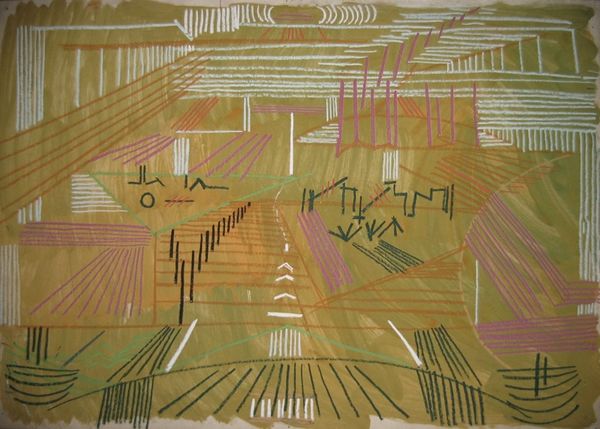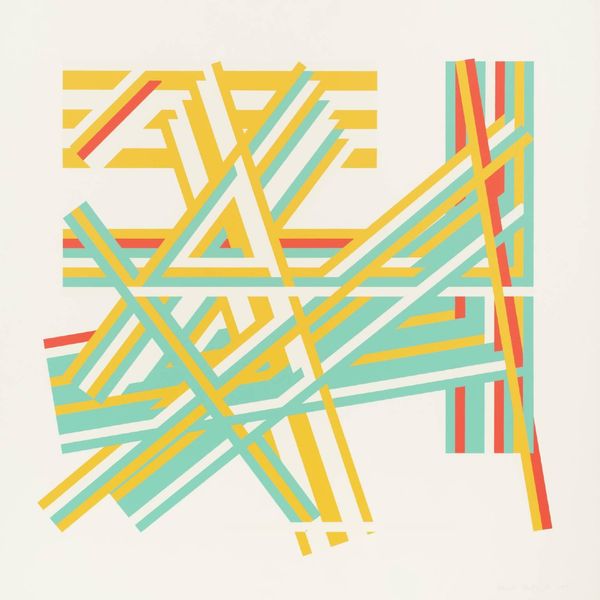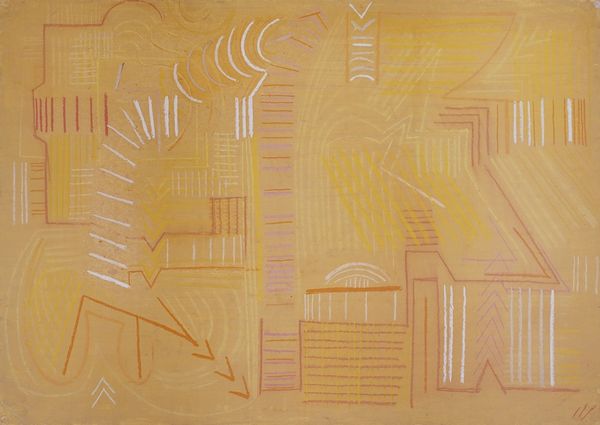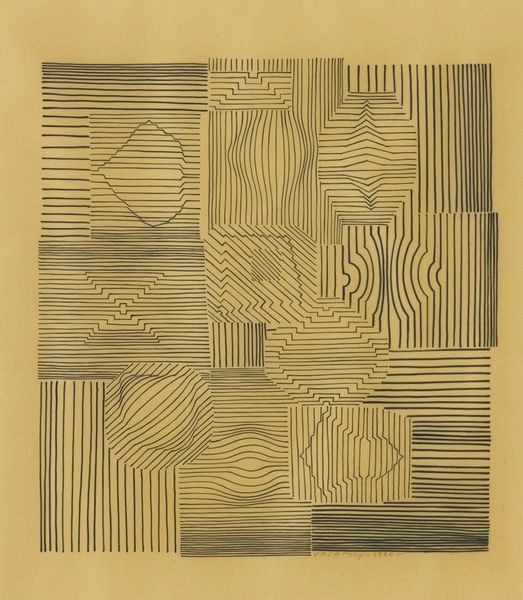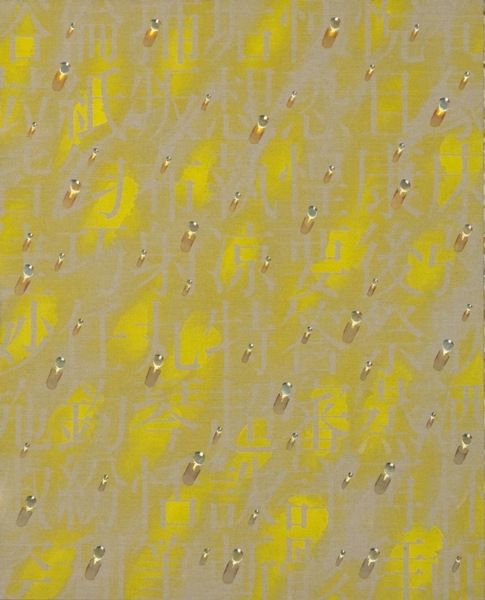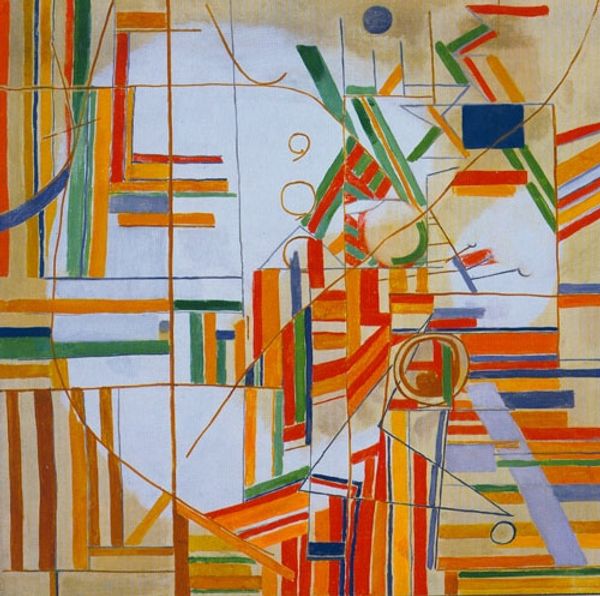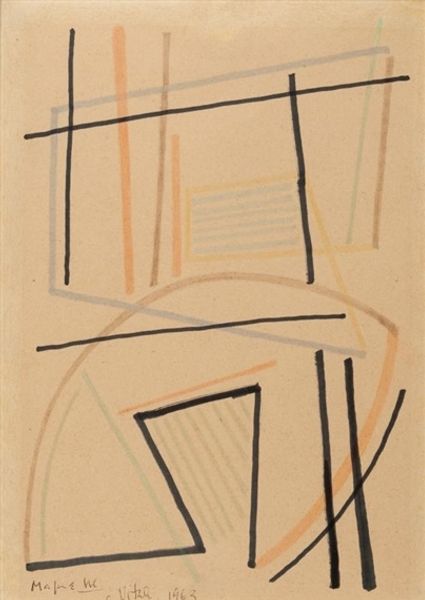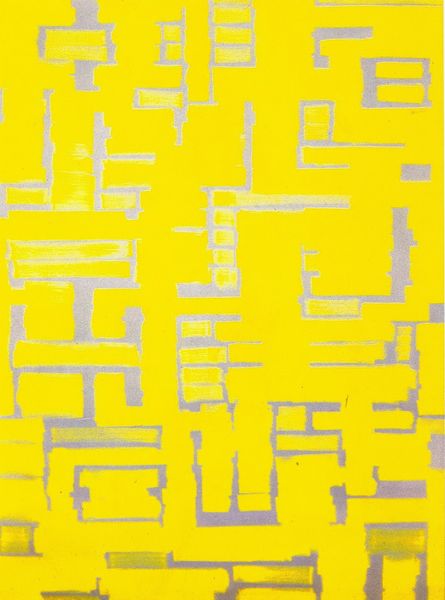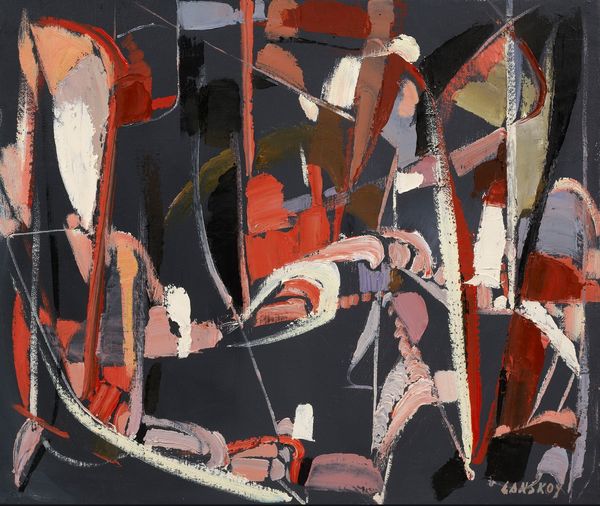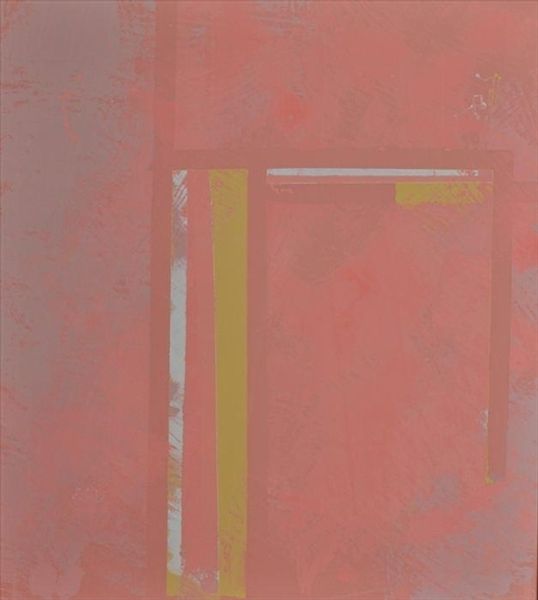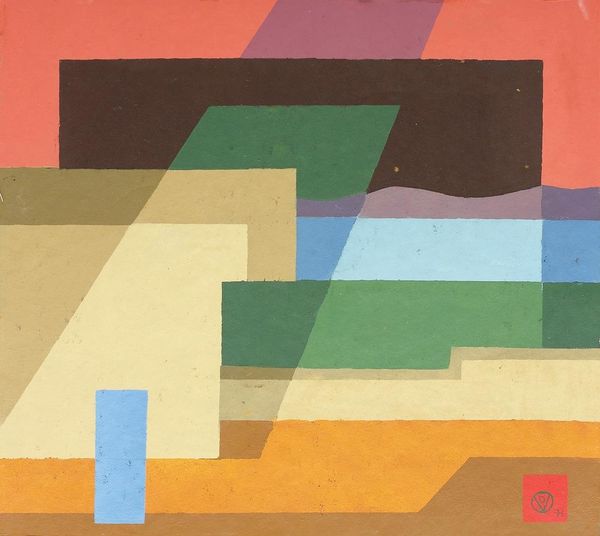
painting, acrylic-paint
#
abstract-expressionism
#
abstract expressionism
#
painting
#
acrylic-paint
#
neo expressionist
#
geometric
#
geometric-abstraction
#
line
Copyright: Constantin Flondor,Fair Use
Curator: Standing before us is Constantin Flondor’s “August-Field-Sun,” an acrylic on canvas work from 1966. Editor: Well, first impression? It's strangely architectural. Like a sun-drenched, slightly off-kilter blueprint of... something. Maybe a fantastical grain elevator? The pervasive yellow, the lines—they whisper "mid-century" to me, with just a dash of the surreal. Curator: Yes, there is that blueprint-like structure... What I find fascinating is Flondor's ability to create a sense of depth with such simple lines. Those pastel-tinged verticals certainly provide rhythm, the slightly skewed lines of perspective draw you into what almost feels like an esoteric space, what do you see in them? Editor: For me, the linear element is what most interests me. These lines, whether straight or slightly skewed, have long symbolized structure, order, and boundaries – it makes one wonder, especially in abstract expressionism, what boundaries Flondor wants us to consider here, both visually and conceptually. Are we seeing the architectural space within our minds? And the overall color suggests not just the sun, but a fading light on an older architectural framework perhaps. Curator: Yes! Especially in light of the socio-political circumstances. Flondor belonged to a generation of Romanian artists working under a repressive regime; they used abstract forms as a form of... quiet dissent, or an attempt to create a mental place free from imposed ideologies. Editor: Exactly! The abstraction becomes a shield, a way to communicate deeper, more subversive meanings beneath a veneer of geometric shapes and summery colors. The August sun, normally a symbol of warmth and life, here feels...coded. Curator: Yes, though Flondor creates something universal here—it goes beyond specific cultural conditions. The tension between order and the unpredictable energy of line makes it hard for our eyes to come to a rest. This is more than geometry at play, its philosophical, too. Editor: I agree. It's as though Flondor, through these meticulously rendered yet somehow volatile lines, is questioning the very nature of perception itself, and maybe hinting at the fragility of architectural as much as ideological constructs in that era and time, and for all of us. Curator: What you just shared has given me a fresh perspective, I'm taking the image on now with new eyes. Thanks! Editor: My pleasure! The interplay of symbol and personal vision - it keeps art alive, doesn’t it?
Comments
No comments
Be the first to comment and join the conversation on the ultimate creative platform.
